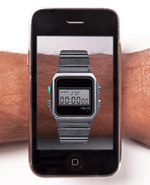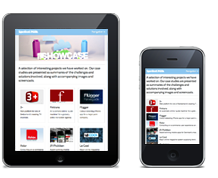Smartphones have made computers mobile, and more importantly, they’ve made access to the Internet mobile. This present companies with unprecedented opportunities to bridge the gap between the physical and digital world, which (if applied wisely) can greatly improve the user experience of things like e-commerce shopping.
Some of you might have seen this:
Tesco in South Korea have put up a banners mimicking grocery store shelves in the subway, letting people buy groceries from the e-commerce store with their smartphone while waiting for the train.
From a user experience point of view this is an interesting move. I see (at least) 3 usability improvements over a traditional e-commerce site:
- The need to navigating endless subcategories is eliminated (online grocery shopping typically requires this). In fact, it minimizes the use of an app to navigate the e-commerce store to a bare minimum.
- Real size, 1:1 images of the products can be used. Due to extremely varying screen sizes and resolutions, it’s typically difficult for the customer to get a feel for the size of the products they’re looking at. When dealing with food, the size of a portion would seem likely to have a significant impact on what a customer may or may not choose to buy.
- It strongly mimics what the users already knows, by displaying it as an actual store shelf. Thoughtful use of visual metaphors can greatly increase usability (think: trash bin icon for deleting a computer file, folder icon for organizing files, and so on).
Although, from a business perspective 2 major benefits from “traditional” e-commerce vanishes with this move: first the possibility to offer the consumer nearly unlimited choices, and secondly having a virtually free presentation cost (displaying a product on your website costs close to nothing, whereas interactive “advertisements” on high-traffic train stations hardly come free).
This of course make one suspect that this is a temporary marketing campaign to familiarize people with the idea of online grocery shopping, rather than a permanent “interface” for e-commerce shopping. Nonetheless, it’s an interesting experiment.
Expect to see more and more overlap between the physical and digital world in the coming years.



